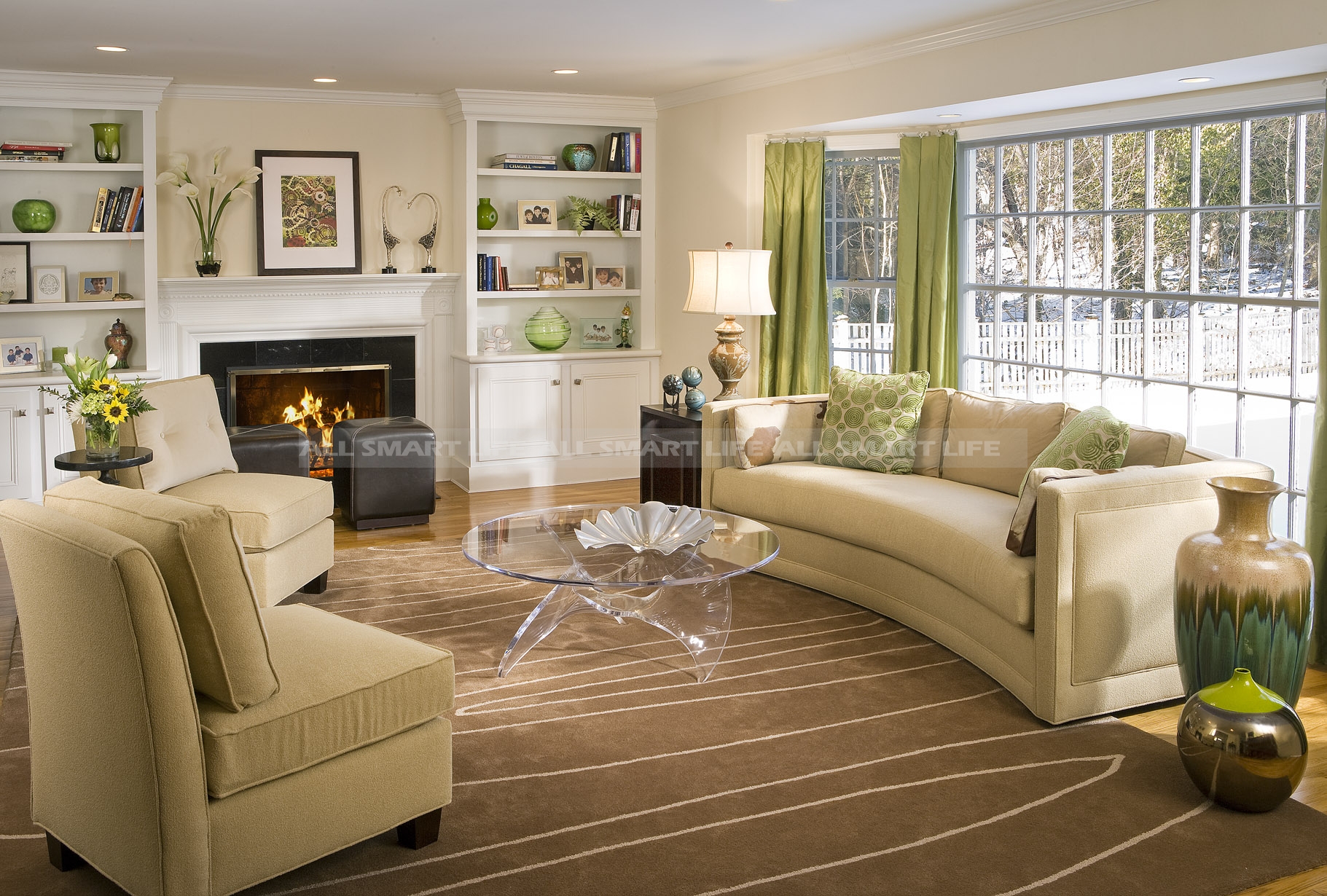

CHRISTINE PITTEL: If I have only one life, let me live it in Sweden.
MARSHALL WATSON: It really is idyllic. These clients — he's American, she's Swedish — live in the United States but move over here for six weeks every summer. It was important to them that their three daughters have a close relationship with the wife's family. Now the girls are almost grown and completely bilingual, and they have a whole set of Swedish friends.
Where exactly is the house?
On an island in the archipelago outside Stockholm. The main house was built in the 1970s in the northern Swedish style with hand-hewn logs — square, not round. Then there's a guest- house that we basically rebuilt, since it had minimal electricity and plumbing — and no charm. A barn, a sauna, and a few other cottages round out the compound.
There's something so appealing about Swedish style. How would you describe it?
It's spare, with lots of air around each piece of furniture, so there's a feeling of lightness. And the furniture is often painted white, or some other pale, chalky color. You rarely see dark wood, because the whole idea is to invite more light into a room. Floors are painted white or scrubbed so thoroughly that they look as if they were bleached. Curtains are sheer. Rooms will be lit by candles every night, even during the summer months. And there are mirrors, lots of mirrors, to reflect the glow and double the sense of light.
I love painted furniture, like that pale green table in the entry of the main house.
It's a country piece, a 17th-century refectory table that I found in Småland, which is a mecca for designers because everywhere you turn, there's another barn or warehouse filled with Gustavian antiques. And I think I've crawled around all of them. The table wasn't green when I saw it. Pieces like this were painted over and over, and when you decide to buy one, the dealer says, "We'll scrape it." The first time I heard this, I asked, "What do you mean?" He explained that they will scrape off the newer paint to get down to an earlier layer. Somehow, they always find the most interesting color and reveal it in a way that creates the perfect patina, with underlayers of other colors showing through.
I think of gray and blue as the Swedish palette, but you've done something different.
Cream, green, and pomegranate red are the colors that run through the main house. The palette may look different to you, but it's no less Swedish. That red is known as Falun red, after the copper mine that was the original source of the pigment, and it's very common in Swedish folk art. I use it as an accent on the back of the bookshelves in the living room, and it's also in the fabrics and the trim. There's the typical plaster fireplace, large casement windows to let in the light, a comfortable sofa, a pair of chalky white Gustavian chairs, and a big coffee table where the family can gather round and play games. The walls are painted a pale green, which becomes darker in the dining room and then reappears in the master bedroom.
That bedroom is straight out of an A-frame cabin. Was it difficult to design?
Let's just say it was a challenge. But I thought the architecture was so interesting that I divided the walls into panels, to accentuate them. I wanted to make you really look at those angles, as opposed to pretending they're not there. The panels are upholstered in a trellis pattern, and you'll notice there's a lot of air in the design. Traditional Swedish patterns, like the checks on the bed skirt and the stripes at the window, are simple and airy. It's as if they wanted to let in more light, even through the fabrics.
In the guesthouse, you switch to a more familiar palette.
Foggy blues, soft grays, and whites. But everything is blurred. Even the whites have a bit of blue or gray in them. You rarely see bright white in Sweden. They're neutral colors. In the U.S., we think of neutrals as beige, gray, or off-white — all basically derived from brown. Swedish neutrals, in contrast, have the sky or the lake in them, rather than the earth. There's a bit of blue in the green and a bit of green in the blue, and everything is softened with a touch of gray. These colors are peaceful and restful, because they all have hues in common and they all have a similar value on the scale of light to dark. That makes for a very tranquil space.
It must be lovely to linger in the dining room on one of those midsummer nights, when twilight seems to last forever.
It does feel rather magical when it's still light outside at 9 p.m., 10 p.m., 11 p.m., midnight. But I think Stephen Sondheim said it best in A Little Night Music, when he wrote, "Perpetual sunset is rather an unsettling thing." That's why every bedroom has blackout curtains. At some point, you simply have to stop eating and drinking and talking and go to sleep!
Some Home Wall decor Accessories:http://www.allsmartlife.com/